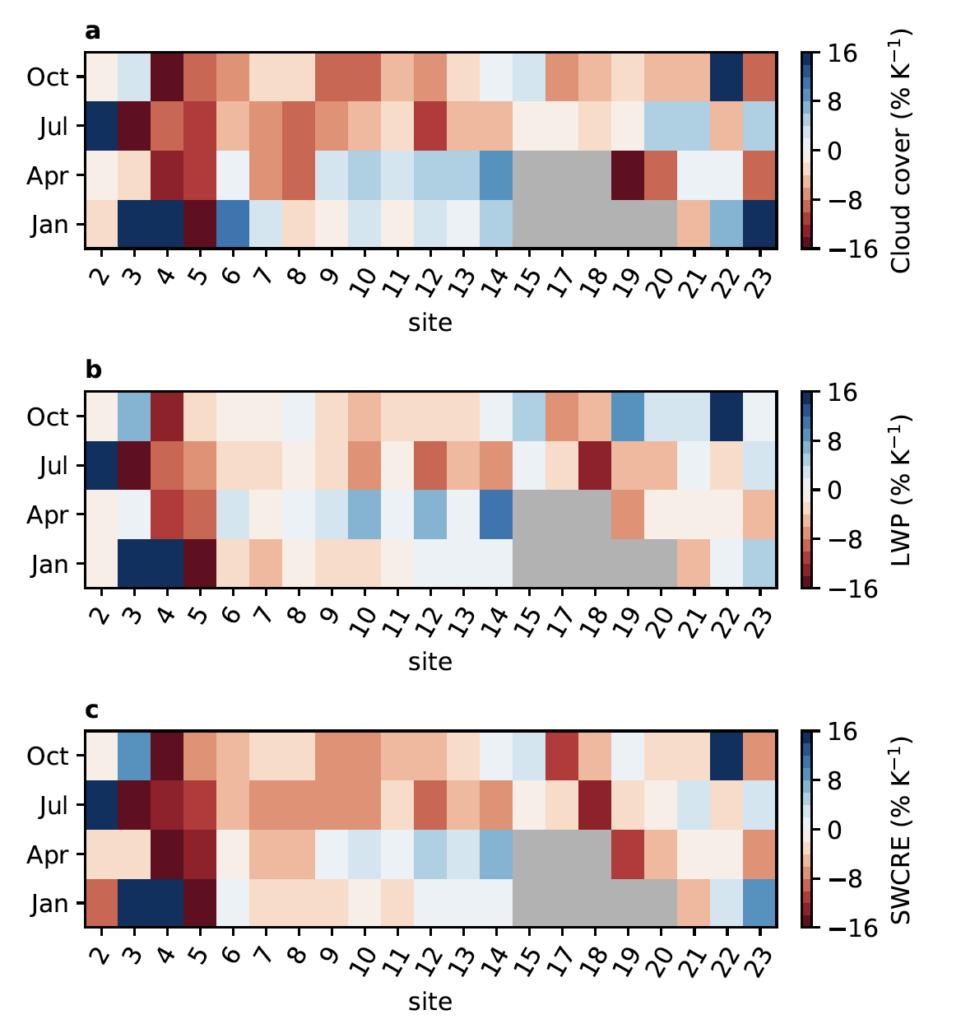Each fall, the American Geophysical Union unites scientists and policy makers from over 100 countries to discuss their scientific discoveries and their implications for societies at large. This year, members of the Climate Modeling Alliance presented research featuring our climate model development.
Large and small-scale processes in climate
With the intent to build a new Earth System Model (ESM) that is grounded in physics and designed for automated calibration using machine learning, Anna Jaruga presented On Coupling (and Separating) Subgrid-cale Turbulence and Cloud Microphysics Processes in Julia. In order to fully understand and resolve small-scale uncertainties such as those we see in clouds and turbulence, we must both separate out microphysical from dynamical processes and couple them together in our model, all in a way that respects the underlying physical laws.
In order to expand the dataset available for training global circulation model (GCM) parameterizations, Zhaoyi Shen and collaborators generated a library of large-eddy simulations (LES) forced by large-scale forcings from GCMs. Zhaoyi Shen presented A Library of Large-eddy Simulations for Calibrating Cloud Parameterizations, containing a range of low-cloud regimes, representing different regions, times of the year, and climate states.
As part of the CliMA model, researchers at MIT have developed Oceananigans.jl, the software package that runs our simulations of small-scale ocean physics in high definition. In Fast, Friendly, Flexible, and Fun Ocean Modeling on CPUs and GPUs in Julia with Oceananigans.jl, Greg Wagner examines the performance of the software on CPUs and GPUs, demonstrating the functional design paradigm written in Julia that allows for easy, engaging, high level modeling of large-scale problems in climate.
Addressing parametric uncertainty using Calibrate, Emulate, Sample
Over past years, researchers at CliMA developed the Calibrate, Emulate, Sample (CES) method, which can be used for Bayesian quantification of uncertainty in a computationally expensive models in a way that is about 1000 times faster than previous methods; we are now using CES broadly in our data assimilation and uncertainty quantification efforts. In Uncertainty Quantification of Convection Parameters within an Idealized Climate Model, Oliver Dunbar prototyped how the CES method can be employed in an idealized GCM, to quantify uncertainties effectively even in the presence of chaotic variability of the climate system. In Parameter Uncertainty Quantification in an Idealized GCM with a Seasonal Cycle, Mike Howland demonstrated these methods in the same idealized GCM but exploiting the seasonal cycle in a way that reduces error and uncertainty in climate predictions.. Melanie Bieli presented A Bayesian Approach to Learning Collision Kernels in Cloudy, a Flexible Bulk Microphysics Scheme, which uses Bayesian inference to account for parametric uncertainty in microphysics schemes. Cloudy is a new, flexible and modular scheme that simulates the breakup of cloud droplets and is set up to learn parameters of collision kernels from data. The goal is to create simpler microphysics schemes that systematically harness observations for calibration and uncertainty quantification.
Coupling and the Dynamical Core
At CliMA, one of our goals is to create an open-source codebase that supports LES and GCM configurations in a way that is accessible to a broad range of users. In Towards the CliMA Earth System Model: Composable Operators for Flexible Discretizations, Valeria Barra described the numerical and design aspects of ClimaCore.jl, the dynamical core of the models that our researchers at CliMA have been developing.
In order to communicate information between the different component models–such as those for atmosphere, land, and ocean–the team has built a coupler, which is a piece of software within the ESM that organizes the execution, synchronization, and output of all the components. In Coupling Different Hierarchies of Climate Models with the CliMA Coupler, Ben Mackay presented the work that he and others have done to build the CliMA coupler. The coupler aims to facilitate our ability to have all the components of the model developed independently with parallel execution and allows for the specification of partial differential equations (PDEs), time-steppers, discretizations, and grids, as well as faster identification of errors in model numerics.
By designing and employing innovative methods for Earth System modeling, we are working toward the goal of producing an ESM that learns automatically from data, be that observational data from space or from the ground or computationally generated on-demand in high-resolution simulations.
Figure: Percentage changes in (a) cloud cover, (b) LWP, and (c) shortwave cloud radiative effect resulting from a 4K increase in SST in the LES driven by HadGEM2-A. (Credit: Zhaoyi Shen, Caltech)


